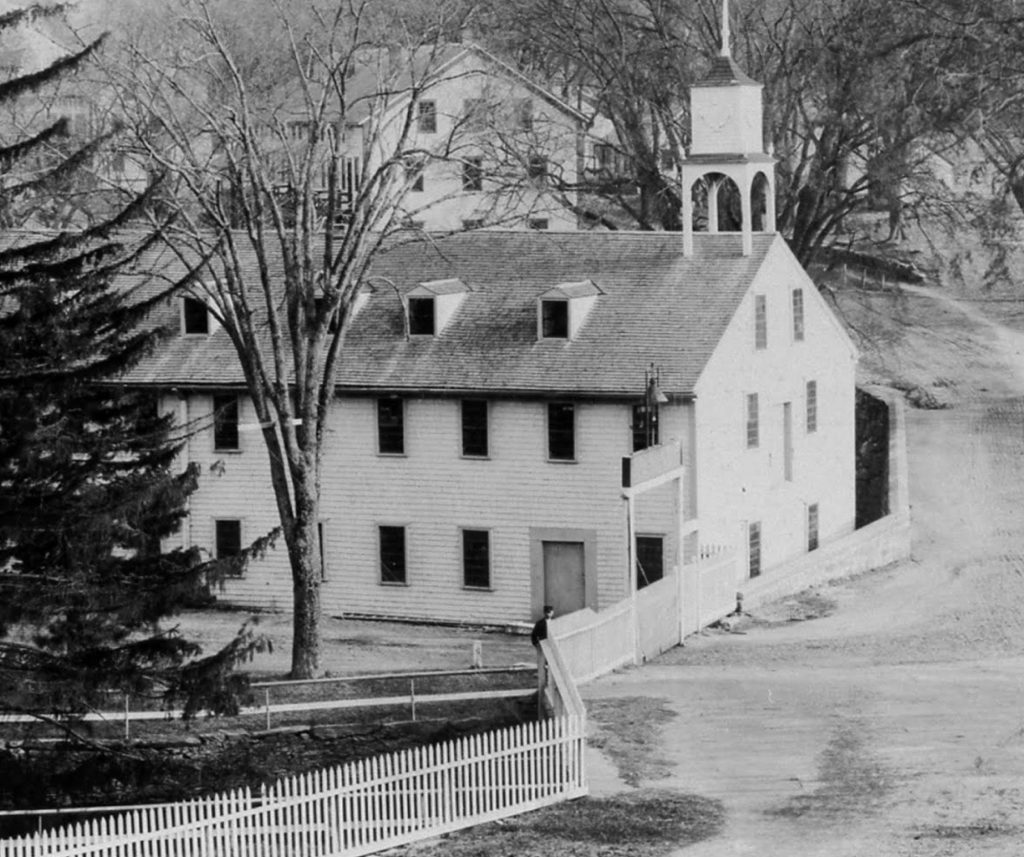
Behind every abandoned building is a story. Within its walls forgotten voices whisper endless conversations, once-important papers yellow in the sun that sneaks through cracked windows, old time cards sit in their holders, covered in the smudged fingerprints of their old owners. Rhode Island is full of these vacant, lively, buildings. For someone who builds a career out of investigating, and exposing, the hidden lives behind these structures, there is no better place to be. Christian De Rezendes, established documentary filmmaker, takes us into one of these spectacular buildings with his latest project, Slatersville.
Since high school, De Rezendes has been a filmmaker. He has always been fascinated with stories, bouncing between the art form of documentary and narrative film, but always coming back to documentary. His newest documentary, Slatersville, is about the famous historical town, Slatersville in North Smithfield. As a testament to his life-long commitment to film, the first few scenes of Slatersville are clips he took when he was 18, back in 1993. Beginning the documentary this way is a reflection of the long history of Slatersville, and a reflection of De Rezendes’ long career as a filmmaker.
In the mid-90s, De Rezendes had a revelation: if he were to begin producing his own movies, then he would have to create his own label. He created Breaking Branches Records in 1996, and shifted his focus to making documentaries rather than narrative films. He tells me over coffee that the reason he prefers documentaries over narrative films is because of the challenge. “As far as constructing compelling narratives in the editing room, you have to make sure you have all these things. Instead of creating stories, the real-life elements of the story in a documentary dictate the direction of the story.”
De Rezendes’ films have been internationally recognized in film festivals. There is something special about stories from the smallest state being shared with such a wide audience. But De Rezendes does not think that is so extraordinary. He knows that no matter where the subject is being filmed, “the most important thing is that whatever you work on, whatever story you tell from whatever place it is, the elements need to be universal. Anyone, from anywhere they are watching, needs to be able to relate to the characters in the story. With that in mind, it can go anywhere.”
Slatersville has been filmed for over 13 years and follows the stories of 150 people. These stories are incredibly important to De Rezendes, because so far, 29 of the people interviewed have passed away. Capturing their stories on film has created an immortal account of their lives. The premise of Slatersville is an examination of one of the first mill villages in the country that is still intact, and the boom of industrialization, wealth, and labor strikes that take place around the village. When De Rezendes started the project, he thought “it was just going to be a feature length documentary. What happened was that it just exploded, things came to light that nobody knew existed. It is a very large story.” For example, he just traveled to New Mexico to conduct an interview.
De Rezendes has always been fascinated with Slatersville Mill, the stories behind it, and what would eventually happen as it slipped into a state of disrepair. He technically started the documentary in 2011, but mentally, he’s been preparing to film this story since he took that first shot when he was 18. “Even at that young age I saw there was once life in that historic structure at the center of town. I had a love of history, I needed to know what was going to happen to this building.” In addition to chronicling the various historical stories, Slatersville follows the process of trying to decide what to do with the building. Sadly, many important buildings of history lay forgotten, subject to the molding hands of time. Slatersville Mill was no different, becoming so decrepit that a tree grew out of one of its windows.
Telling the story of Slatersville is not De Rezendes’ sole purpose. He creates films to make people care about history, and to instill in viewers the same passion he has. This passion is evident as I lean over his phone screen to watch a clip from the documentary about the riots during the Great Textile Strike of 1934, when the National Guard was called in to subdue over 5,000 protesters. This was something I never knew about, and as I watched the rioters throw bricks through the mill’s windows, and run amid flying bullets, I felt a sense of pride for our state, for the tough, courageous people who came before me. Slatersville is more than a documentary about history, it is about the people that lived around it and worked within it. “It’s about the first mill village, and what historically ran through it, as well as the people who are in it. The tail wags the dog. It makes people think about their village, their historical surroundings, their background, and family — that is the greater story. It just uses Slatersville as an example.”
We finished our coffees, the Coffee Exchange was so crowded we sat in chairs, tableless, next to a dishwasher. But before we rise from our corner, I wanted to know what someone, who captures life through film, finds fascinating about our Rhode Island. De Rezendes pauses for a moment, “What I love about this state is [what I’ve learned] from the last 10 years spent making this film. There are so many stories here that people take for granted. I think there are stories, within stories, within stories in this little tiny state.”
You can watch Slatersville on PBS at RI PBS. For more info, visit firstmillvillage.com.